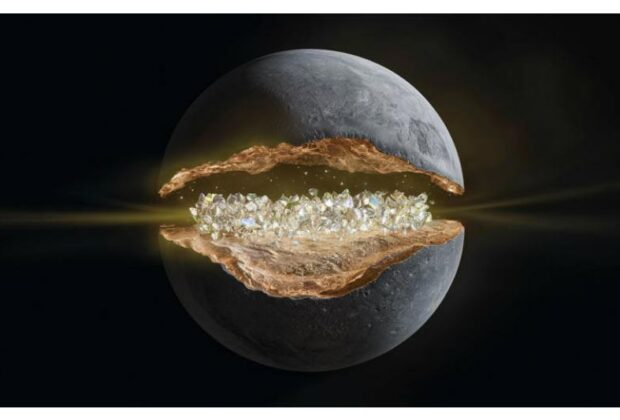In a recent study that was published in Nature Communications, scientists from China and Belgium suggested that there might be a diamond layer at Mercury’s core-mantle border. It implies that the thickness of this layer can reach up to 18 kilometers (11 miles). The discovery contributes significantly to our knowledge of planetary differentiation processes, or the methods by which planets form discrete interior layers.
The carbon-rich lava ocean of Mercury is thought to have crystallized, forming the diamond layer, according to experts. This carbon turned into a crust of graphite on the planet’s surface when it cooled. The work casts doubt on the notion that graphite was the sole stable carbon phase at this time, though.
Dr. Yanhao Lin, a co-author of the study from the Center for High Pressure Science and Technology Advanced Research in Beijing, said, “Many years ago, I noticed that Mercury’s extremely high carbon content might have significant implications.” “It made me realize that something special probably happened within its interior.”
The conditions of the interior of Mercury were replicated by the researchers using thermodynamic modeling in conjunction with high-pressure and temperature tests. By reaching pressure levels of up to 7 Giga Pascals, they were able to examine the equilibrium phases of the minerals on Mercury.
They discovered that sulfur in Mercury’s iron core had an impact on the magma ocean’s crystallization process. At the core-mantle barrier, sulfur promotes the creation of a diamond layer by lowering the liquidus temperature. Furthermore, it generated a layer of iron sulfide, which affected the carbon content throughout planetary development.
Mercury’s magnetic field generation and thermal dynamics are affected by the high thermal conductivity of the diamond layer. Temperature gradients and convection in the liquid outer core are influenced by the diamond layer’s assistance in transferring heat from the core to the mantle, which in turn affects the magnetic field.
Understanding other carbon-rich exoplanetary systems and terrestrial planets with sizes and compositions comparable to Mercury may also be affected by the findings. Similar traces could be left by activities that occur on other planets in addition to Mercury. According to the study’s findings, identical diamond layers might exist on other terrestrial planetarium certain prerequisites must be met.








